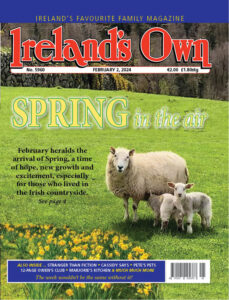Seventy-years after their forced evacuation from their island homes, EUGENE DOYLE sketches the final years of the Blasket Island community.
Lying in the Atlantic Ocean some three miles from Dunquin (Dun Caoin) on the coast of County Kerry are the windswept, uninhabited Blasket Islands, a group of seven of which the Great Blasket (An Blascaod Mór ) is the largest.
 About five miles long and less than one mile broad, the island was home to about one hundred and fifty souls until its final evacuation in 1953. Entirely Irish-speaking in the early twentieth century, the small population had few of the resources common to mainland Ireland.
About five miles long and less than one mile broad, the island was home to about one hundred and fifty souls until its final evacuation in 1953. Entirely Irish-speaking in the early twentieth century, the small population had few of the resources common to mainland Ireland.
There were no shops, roads, phones or electricity, and no doctor or priest. There was a one-teacher school and twenty-eight dwelling houses. The way of life, centering round fishing, hunting, and cultivation of crops for home consumption, had remained unchanged for centuries.
Shortly after 1900, with usage of Irish shrinking fast throughout Ireland, the Great Blasket with its pure Irish speech and its close-knit community, became a magnet for scholars and writers. First of these in 1905 was JM Synge, friend of the poet WB Yeats and Lady Gregory of the Abbey Theatre, who would go on to create his masterpiece called ‘The Playboy of the Western World’.
Five years later, 28 year–old Robin Flower, an Assistant Keeper in London’s British Museum, would fall in love with the island and its people, and would return again and again until old age.
Affectionately known on the island as Bláithín (Little Flower) he would recognise the talent of the islander Tomás Ó Criomhthain, a small lively man with an intelligent expression.
Continue reading in this week’s Ireland’s Own
Photo: The Great Blasket Island by Pól Ó Conghaile


